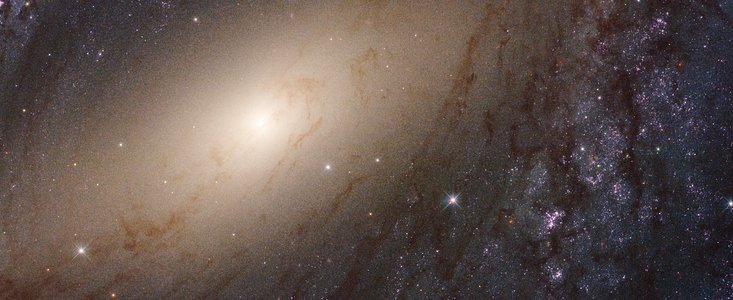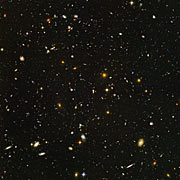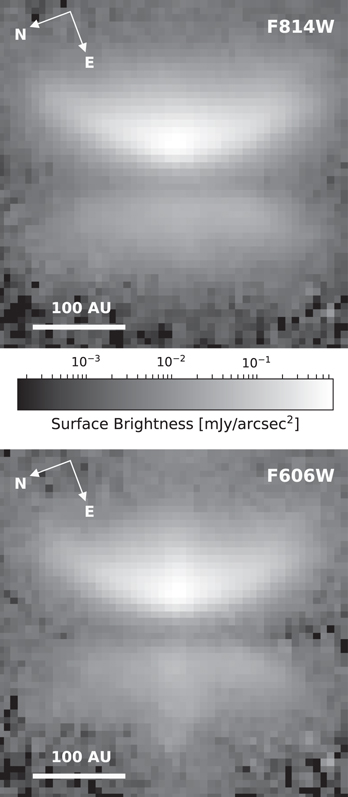History of Telescopes
When students begin to learn about space, astronomy, and the telescope in school, one of the first names that stands out is Galileo’s. Galileo Galilei was the first to point a telescope towards space in 1609. He was the first person in history to observe four of Jupiter’s moons, while also discovering that the moon was rough and uneven. These early discoveries revolutionized astronomy and were the catalysts for future space exploration. Galileo, however, did not invent the telescope. It was most likely invented in the 1500s, with the first patent issued in 1608 to Hans Lippershey, a Dutch eyeglass maker. Galileo heard about these lenses and quickly designed his own. His homemade telescope could look further into the sky and create clearer images.
The telescopes used by Galileo and Dutch eyeglass makers were made with curved pieces of glass, which focus light. Today, telescopes use mirrors instead. Mirrors are lighter and are easier to manufacture to be extremely large and pristine, crucial to the efficacy of telescopes. The lenses and mirrors are not magnifying the images, but rather gathering light. The larger the mirror, the more light it can gather; the smoother the mirror, the more pristine the image.
The image below illustrates how a refracting telescope works utilizing mirrors. Light enters through the opening, which is a curved mirror. A smaller mirror then reflects the light, and the image, to the viewer.

An Illustration of how a Refracting Telescope works. Courtesy of SpacePlace
Hubble Space Telescope
The Hubble Space Telescope is one of the most famous ones. The telescope got its name from astronomer Edwin Hubble. He made many important astronomical discoveries, with one of the most famous being his findings that the farther a galaxy is from earth, the faster that galaxy is moving away from earth. This initiated the formulation of the big bang theory. The Hubble Space Telescope was launched by the space shuttle, Discovery, in 1990. The space shuttle allowed the telescope to be launched out of the earth’s atmosphere and to the correct altitude. In order to capture crisp images that extend far beyond earth, the Hubble Telescope has to have an extremely large mirror. As discussed above, the larger the mirror, the more light the mirror collects, and the better the image. The Hubble’s mirror is 2.4 meters across, and extremely polished.
Human eyes can only see in the visual light spectrum, while Hubble can capture light through a larger spectrum. With the large mirror and large exterior, Hubble can capture images from ultraviolet to the near infrared. The earth’s atmosphere absorbs ultraviolet light, so telescopes in space are the only way to capture images of entities that emit ultraviolet light. This wider range allows for more celestial bodies to be photographed and further improves our understanding of space.
The image below is an artificially colored ultraviolet image that Hubble captured. It is the high resolution image of star formation. The UV images do not have any color, but scientists later color the images based off of properties such as known temperature.

UV Image captured by the Hubble Space Telescope. Courtesy of esahubble
Recent Developments due to Hubble Space Telescope
Although launched in 1990, the Hubble Space Telescope is still taking images of space. Advancements have been continually added to the telescope to further improve the crispness of the pictures and allow even further distances of space to be captured.
In a 2017 paper titled, “Hubble Space Telescope Scattered-light Imaging and Modeling of the Edge-on Protoplanetary Disk ESO-Hα 569”, scientists attempt to further their understanding of planet formation using a camera called the Advanced Camera for Surveys (ACS). The protoplanet theory expresses how planets form in space. It describes how swirling gas and dust can be condensed into a planet, with this protoplanet orbiting a star or sun. This paper focuses on protoplanetary disks since photos of the edges are not obstructed by the central star. The central star is ESO-Hα 569.
The ACS was a monumental addition to the Hubble Space Telescope, it was implemented on Servicing Mission 3B in March of 2002. The ACS was a replacement for the Faint Object Camera, and it improved the amount of data collected, image quality, and field of view. This new camera also allowed Hubble to capture images of a new Deep Field. It revealed galaxies created just after the Big Bang, and took images as far as possible in the visual spectrum. The image below is the furthest image in the universe taken in the visible light spectrum. Captured in 2004 by the ACS.

Image taken by the Advanced Camera for Surveys (ACS) on the Hubble Space Telescope. Courtesy of esahubble
The ACS captured scattered light images. The researchers found that the western side of the protoplanetary disk is about 20 times brighter than the eastern side. This indicates that the western side tilts slightly towards the Hubble Telescope. The images illustrating the brightness are shown below.

A Scattered Light Image of a Protoplanetary Disk illustrating the surface brightness. Courtesy of The Astrophysical Journal
One of the major conclusions from these scattered light images and analysis is that this disk is determined to be an “optically thick protoplanetary disk viewed nearly edge-on.” This means that it is confirmed that this celestial body being photographed is a protoplanetary disk, and can be used to learn about planetary formation. Another conclusion is that the amount of material surrounding the disk past the outer radius must quickly fall off in order to capture all at once: the scattered light above the midplane of the disk, the flux ratio between the bottom and top of the disk, and the width of the dark lane. The dark lane is the area where the optical depth is equal to 1.
In order to further learn about the properties of protoplanetary disks, more images should be captured, but at a better resolution and multiple different wavelengths. These more detailed images will hopefully further discern the uncertainties around these disks.
To further learn about the future of space telescopes see here.
The Future for Space Images in Color
These images are in black and white; however, Duke University is performing research to create colored images from scattered light. From faculty members in the Electrical and Computer Engineering department, they found using a coded aperture and a prism created a colored image. The coded aperture works as a light filter while the prism scatters the light based on different frequencies. This causes a slight shift from the original image, this shift can be measured and can point to the colors. Although promising, this research is still being performed. The color is interesting to know since it may reveal the space entity’s chemistry. This would further help the understanding of how planets form, as researched in the article.
This blog post was sponsored by Connet Laser: leaders in the fiber laser and optical fiber technologies.
